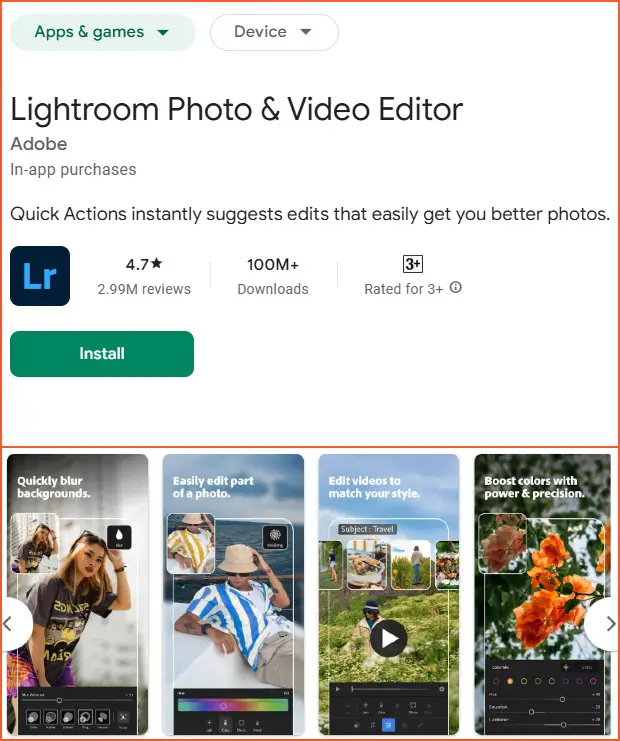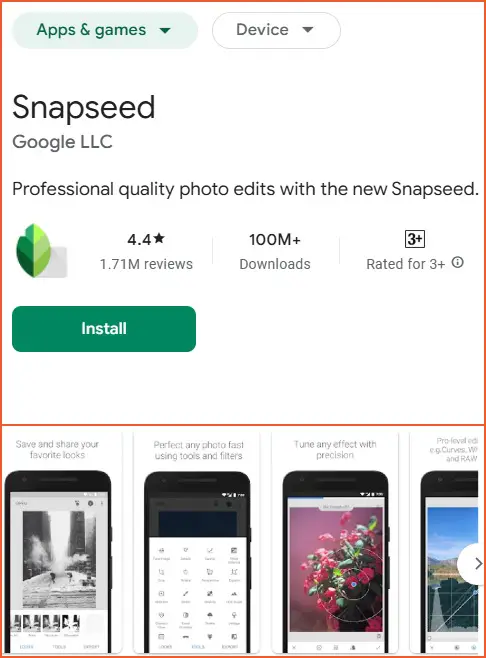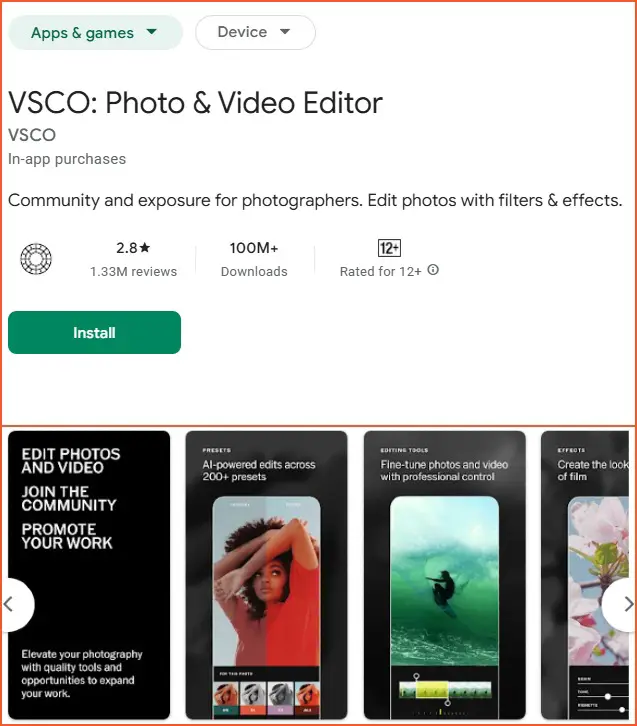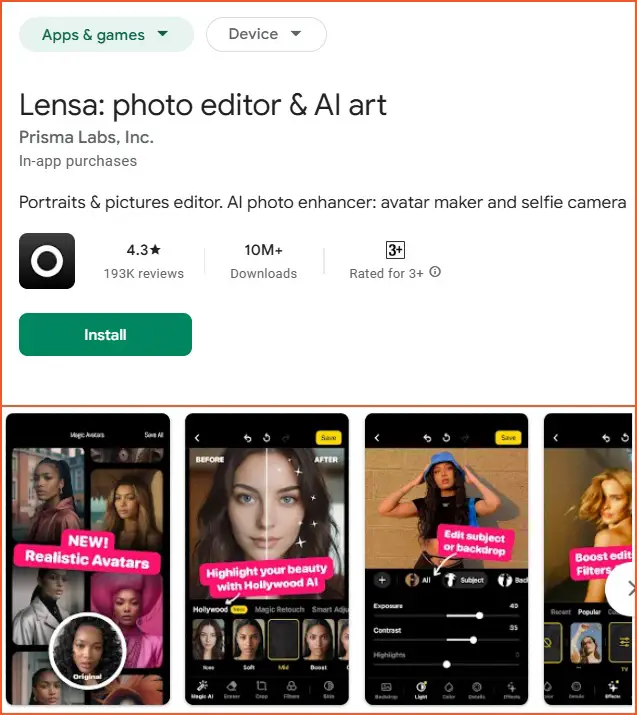As a photographer, I know the struggle is real. You pour your heart into capturing the perfect shot, but sometimes it needs a little extra in post-production. That’s where photo editing apps come in. They can enhance your images, but with so many options, picking the right one can be tough. This guide explores the top photo editing apps in 2025, covering their pros, cons, and ideal use cases.
Table of Contents:
What Makes a Great Photo Editing App?
Before we explore the best photo editing apps, let’s discuss the qualities that set them apart. Great photo editing isn’t about slapping on a filter. It involves using precision tools to improve photos with photo effects or image manipulation.
Key Features of Top Photo Editing Apps
Any quality editing app should have a few essentials. Robust editing features, including adjustments for exposure, contrast, color, and cropping, are key.
Advanced apps may offer curves, HSL, and selective adjustments. A seamless user experience is also important. Even powerful apps should have a clean and intuitive interface.
Repeatable results are vital for consistent edits. Saving edits as a preset or copy-pasting settings allows for an efficient workflow. Fair pricing without aggressive marketing or excessive upgrade requests is another plus. You should be able to improve your images without constant upselling or intrusive ads.
The Best Photo Editing Apps: A Detailed Breakdown
The right editing apps can transform photos for both professionals and beginners. Now that you know our criteria, let’s look at your options for photo filters and color adjustments.

1. Adobe Lightroom Mobile: The Professional’s Choice
Adobe Lightroom Mobile is a professional standard, even without its desktop version. It blends power and flexibility in an approachable package. It offers a range of free tools, from basic adjustments to intricate curves and presets.
Lightroom is a good place to start for professional photo editing on your smartphone.
Lightroom’s organizational abilities, including photo management and cloud storage of full-resolution images, stand out. The premium features, while effective, come with a subscription tied to Adobe’s ecosystem. The intuitive auto-adjust tool is often the first step in many editing sessions. Refinements with HSL, curves, and geometric manipulation perfect images for printing.

2. Snapseed: Power in Simplicity (and Free.)
For those who prefer free photo editing software without complicated interfaces, Snapseed is an excellent choice. Developed by Nik Software (now owned by Google), it retains its power and clean interface.
It offers easy access to advanced adjustments and targeted changes. The “U Points” feature allows intuitive editing, focusing changes precisely where desired, which is typically a paid feature in many apps.
Snapseed is ideal for quick touch-ups, especially while traveling light, and for those new to editing and photo retouching tools. Its simplicity makes photo manipulation very beginner-friendly.

3. VSCO: Filters to Set the Mood
Filters can elevate your photography with artistic flair. They create stylistic cohesion and eye-catching photos, going beyond manual adjustments. VSCO is an app centered around beautiful film stock-style presets.
Because it offers manual controls, VSCO ranks high among the best photo editing apps for those exploring image enhancer apps.
Its smart filters make it easy to get started with packs tailored around photographic styles. VSCO is perfect for quick and creative mobile editing. With options to blur background or remove unwanted objects, the possibilities are endless.

4. Apple Photos and Google Photos: Mobile Convenience
With so many advanced editing apps, it’s easy to forget pre-installed options. Both Apple Photos and Google Photos provide image tweaking features directly within their systems. Free to use, they simplify image sorting and backups.
They also streamline basic editing, making quick touch-ups convenient. This direct workflow integration is invaluable for enhancing your photographs seamlessly.
Google Photos stands out with its AI-based tools for enhancing images. Early experiments show impressive image editing capabilities using this photo fix software.

5. Lensa: AI Magic (Used Wisely)
Among apps boasting AI breakthroughs, Lensa stands out, blending legitimate features with machine learning. The intelligent editing tools distinguish between portraiture and landscape photography.
Its portrait filter and landscape sky replacement work well for quick enhancement. The one-edit-per-day free tier allowance gives a good preview of many features before a subscription commitment. If background blur or touch-up tools are needed, the app has many such options.
Choosing the Right App
How do you choose from so many options? Consider your individual needs and shooting style.
| App | Best Use Case | Pricing |
|---|---|---|
| Adobe Lightroom | Professional editing, RAW file support, precise adjustments. | Free version available; premium features from $4.99/month. |
| Snapseed | Powerful free editing, user-friendly interface, U Points for selective adjustments. | Free |
| VSCO | Filter-based editing, wide selection of presets, film stock emulation. | Free version available; full access starts at $7.99/month ($29.99 annually). |
| Apple Photos / Google Photos | Basic adjustments, AI tools, pre-installed convenience for everyday photos. | Free, premium (for extra AI uses of Google Photos) requires the 2TB plan, at $9.99/month. |
| Lensa | AI features, good image editor, object removal. | Free for limited usage; premium starts at $2.99 per week or $4.99 per month. Magic Avatars require a separate purchase starting at $3.99. |
Ecommerce businesses may need precise manipulation or easy social media integration. Several third-party apps are optimized for eCommerce product photography.
Bloggers focused on visually appealing Instagram posts and prioritized filters, image capture, and social features. These are great when posting images on social networks. They also excel at taking pictures in exotic photo destinations.
If you shoot portraits, apps like Facetune and AirBrush with portrait tools make sense. Consider which features and workflows best support your desired look and photographic aesthetic.
If you rely on phone photography apps for quick edits, prioritize easy on-the-fly features. If you need AI support, apps with online editing and platform integration are excellent. Adobe Lightroom offers advanced masking and blending options.
Conclusion
This guide offers a solid foundation for picking the best photo editing apps for your needs. Whether you want precise adjustments, artistic filters, or quick touch-ups, there’s an app for you.
Mobile photography is constantly evolving, with emerging technologies like optical character recognition (OCR) and generative AI. Advanced apps are incorporating machine learning for creative tools and streamlining workflow management.
AI can learn from millions of edits, improving software capabilities. This is evident in apps like Imagen AI. These tools indicate exciting developments for photography, offering sophisticated adjustments once limited to desktop software. Mobile photographers have many powerful editing options at their disposal today.
Check out our other articles for the latest Future Photographer content.


